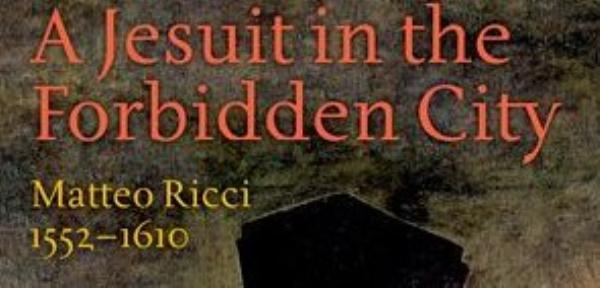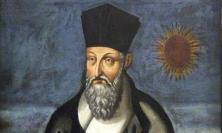Matteo Ricci seemed to be everywhere in 2010! Even the European Parliament sponsored an exhibition to celebrate the 400th anniversary of his death: ‘Meeting of Civilizations. Father Matteo Ricci, European Ambassador to China of the Ming Dynasty’ and extolled the Jesuit as a model of ‘intercultural dialogue’. Ricci’s methods, ministers explained, remain valid today as Europe seeks to expand relations (primarily financial and business, and minimally religious and theological) with China. One cannot deny Ricci’s importance for such intercultural dialogue but one must recall that this dialogue was not an end in itself, but a means for a greater end: the evangelization of China.
Edwin Erle Spanks Professor of History, Religious Studies and Asian Studies at the Pennsylvania State University, R. Po-chia Hsia launched his impressive scholarly career with monographs on the Reformation, Protestant and Catholic, as well as editing Blackwell Companion to the World of the Reformation (Oxford, 2003) and Cambridge History of Christianity. Vol. 6: Reform and Expansion 1500-1660 (Cambridge, 2007). More recently he has concentrated on Jesuit missions to the Far East. Having edited Noble Patronage and Jesuit Missions: Maria Theresia von Fugger-Wellenburg (1690-1762) and Jesuit Missionaries in China and Vietnam (Rome, 2006) in the prestigious Monumenta Historica Societatis Iesu series, he has now written the most complete English biography of Ricci based on primary sources in Chinese and Western languages.
The author recounts Ricci’s slow geographical, spiritual and intellectual journey from Portuguese Goa to the Beijing of the Ming dynasty, a journey best known in the English-speaking world from Vincent Cronin’s depiction in The Wise Man from the West (New York, 1955). Hsia explores and, because of his linguistic abilities, explains better than previous scholars Ricci’s grasp and appreciation of Confucianism as it was understood and appreciated within the late Ming intellectual world. Ricci’s knowledge of classic Confucian texts, Western mathematics and science, along with his fabled memory, opened many doors. His esteem for Chinese culture, especially the role played by the mandarins, did not prevent him from believing in the general superiority of Western culture.
Ricci did indeed appreciate Confucianism, seeing in it many parallels with Christianity. Buddhism’s arrival, he believed, had corrupted Chinese belief and practice. A well-known Buddhist scholar, Huang Hui, who had refused to meet Ricci personally, had obtained a pre-publication copy of the Jesuit’s most famous treatise, The True Meaning of the Lord of Heaven (an English translation published by the Institute of Jesuit Sources in St. Louis in 1985 unfortunately is out of print). Angered by Ricci’s attack on Buddhism, he returned the manuscript now covered with criticism and rebuttals. Ricci incorporated his replies in the published version. He wrote the True Meaning for Confucians in the familiar Platonic style of a dialogue between a Western and a Chinese scholar. Working from Confucian principles, the Western scholar leads his colleague slowly and logically to an appreciation and understanding of Christianity. Subsequent scholars praise the treatise as a magnificent synthesis of Confucianism and Christianity. At the time, however, as Hsia stresses, the book ‘amounted to a declaration of war against Buddhism’ (p. 239). Leading Buddhists submitted a memorial against Ricci to the emperor as a counter-attack, but, as Ricci believed, ‘divine intervention’ protected him: one opponent committed suicide; another, lost his influential position.
Despite Ricci’s current status as poster boy of the principle of accommodation (or inculturation), he and his method were not always in favour. Ricci’s Sicilian Jesuit successor Niccolò Longobardo disapproved; an experienced Dominican missionary Domingo Navarete repudiated the approach. Rome itself vacillated for more than one hundred years. Hsia briefly and insightfully treats the post-Ricci ‘Chinese Rites’ controversy and Ricci historiography in the book’s epilogue.
Hsia touches one sensitive issue in passing. As a student at the Jesuit college in Goa in the 1570s, Ricci protested against a decision that indigenous students could study only Latin and casuistry, and not the superior subjects of philosophy and theology. Similarly he supported the admission of Indians into the Society of Jesus. Unfortunately both were minority positions. Currently a number of scholars are investigating the racial policies of the Society from the exclusion of Jewish Christians, initially welcomed with open arms, to the treatment of African Americans in post-World War II United States. I recommend two recent articles in the Studies in the Spirituality of Jesuits series: Thomas Cohen, ‘Jesuits and New Christians’, in the autumn of 2010; and R. Bentley Anderson’s ‘Numa J. Rousseve, Jr. Creole, Catholic, and Jesuit’ in the winter of the same year. A more extensive treatment of the first is Robert Maryk’s The Jesuit Order as a Synagogue of Jews (Leiden, 2009).
In a letter to his brother Orazio, Ricci described his life:
We the religious, are in these countries like in a voluntary exile, not only far away from our dear ones, father, mother, brothers, and relatives, but also from Christians and our nation, and sometimes in places, where in ten or twenty years one does not see a single European, and others, such as those who are in China, never eat bread nor drink wine (p. 261).
Why would he choose ‘a voluntary exile’? Hsia is reluctant to venture into the realm of spiritual formation, a reluctance he shares with Liam Matthew Brockey, whose justly praised Journey to the East: The Jesuit Mission to China, 1579-1724 (Cambridge, Mass., 2008) is a wonderful complement to this biography. Both authors avoid any discussion of Ignatian spirituality in general, and the Spiritual Exercises in particular. The Ignatian ethos inflamed their hearts; Jesuit culture nurtured their missionary aspirations. Without it, we are left with secular explanations of Ricci’s motivation, his willingness, indeed, his eagerness, to leave behind everything. Without it Ricci seems more a cultural attache, an import/export agent than a Christian missionary. Despite this caveat, I recommend Hsia’s well-researched, well-written, insightful biography.
The reviewer, Thomas McCoog SJ, is the Archivist for the British Province of the Society of Jesus.





